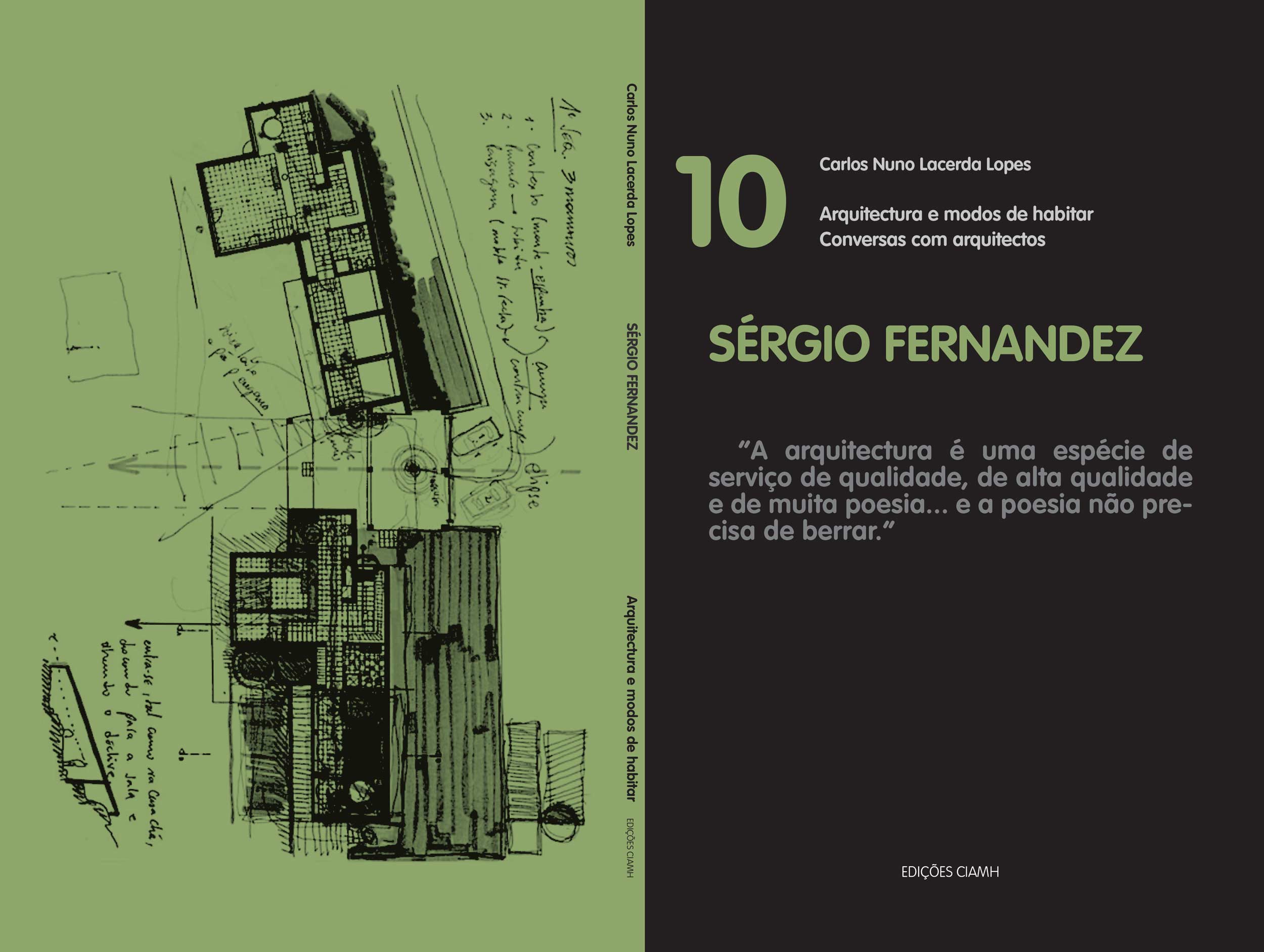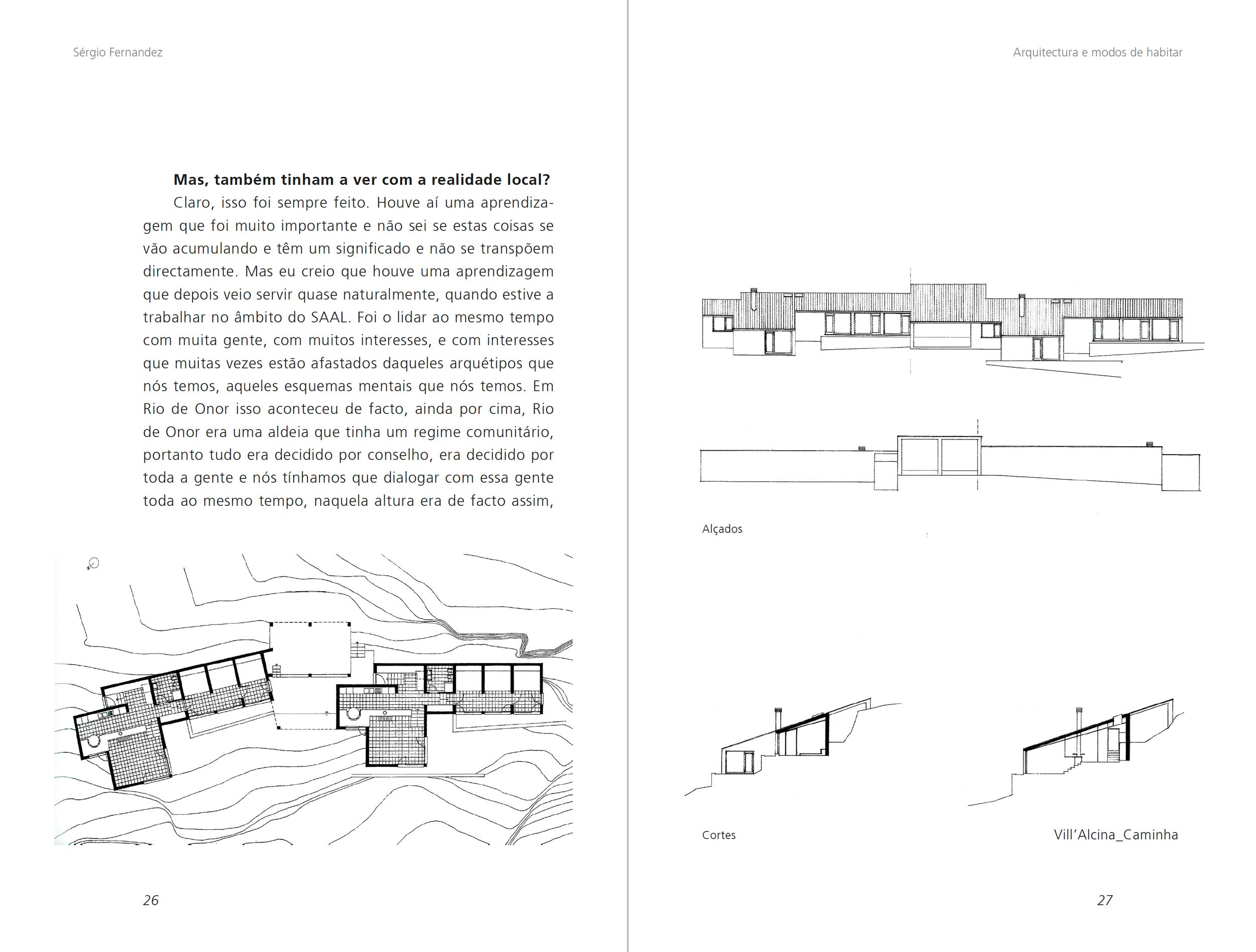ISBN
978-989-98808-9-4
Edition
CIAMH, FAUP
Year
2018
Number of pages
152
Dimension
14,5x22cm

ISBN
978-989-98808-9-4
Edition
CIAMH, FAUP
Year
2018
Number of pages
152
Dimension
14,5x22cm
“This is a collection of interviews by architect Nuno Lacerda Lopes. They are conversations between architects of the School of Oporto where the process of building an ideal of architecture, profession, society and school is sought, based on a personal and open reflection and even clarify the theoretical and practical concerns as well as the circumstances that underlie Portuguese architecture today”.
Excerpt
“Good morning, Architect Sérgio Fernandez, lecturer at the Faculty of Architecture of the University of Oporto and now also at the Faculty of Architecture of the University of Minho. I would like to thank you in advance for this interview, an architect with remarkable experience in the field, both in teaching, in one way, and also in terms of collective housing projects, in which I would like to highlight the Pasteleira building, in co-authorship with Architect Pedro Ramalho, his collaboration with SAAL, and also his house in Caminha, which we can quickly highlight among other works of great quality that we will talk about here. I would like to start by asking you, how was your education, what was that period like when you finished the course and how and when you started working?
As far as my education is concerned, I took the course still at the School of Fine Arts in Oporto and still in a regime that was the reform of 36, in the end, I had a course that was guided by 4 years, called special course and then whoever had more than fourteen of average proceeded to the higher course and completed the course, so it was 6 years more internship, as it’s done now, and final exam, which at the time was called thesis.
The school represented a centre of modernity, though with many exceptions, because it was led by Professor Carlos Ramos, who was in fact a very airy, very civilised man and a man of direct influences, not so much from the Bauhaus but from the Gropius. Therefore, a man betting on the modernity that he had – previous to my entrance, more or less a short time before – had mobilized a series of new people with assistants, of which Távora, Filgueiras, and later Arnaldo Araújo, Loureiro stood out, representing a certain breath of fresh air in the school, where there was still a series of very retrograde people, although people with value, such as Rogério Azevedo, who was my professor.
Rogério Azevedo was a man with a lot of culture, I have no doubt about that, he was really interesting in the conversations he made, and he practically only made conversations; he often wondered in the class what year he was teaching? He didn’t know, he didn’t know and didn’t care.
He was a very cultured and very interesting man, but very reactionary and anything that smelled vaguely of progressive architecture, he would react. Which is strange, because he is a man who made the Oporto Garage of Commerce, but then made all that journey that we all know. So there was a mixture at school, of a certain weight of tradition, and then a new people who were really betting on… and who were the most important at school. I remember perfectly of Loureiro, of Távora that had a great influence and Filgueiras too, and the director Carlos Ramos himself.
I made the school in that mixture, in that more or less complex path and where there were no longer those barriers that had characterized the first struggle for contemporary architecture, modern architecture in Portugal. We had magazines, we already had a series of accesses to things that were done outside. But in spite of everything, what the school was – now I think there’s a very profound change – was theoretically very empty. We had a formation that was very formalist, I remember for example, that the representations in the work deliveries, the walls were not thick, it was not worthwhile, it was only indicating the division from one place to another; it was very formalist, the construction problems were very careless, by the way, I had Rogério de Azevedo as construction teacher, who was a little oblivious to almost everything and so it was a formation quite distant from the real one.
This then began to take on another character, from the publication of the survey and from a certain interest which aroused in the class of professionals and in the school as well, a kind of discovery, authenticity of popular architecture, of country architecture, etc. It was also a form of mystification but, in spite of everything, it changed the state of things a little, and we, as students, and also with the help of the professors, obviously began to take a little more interest in reality, so much so, that much later came the 25th of April, the school was all directly connected to the outside and it was very easy that connection. During our time this was not that much, what happened was a period, in fact, of dazzling discovery of architecture, of authentic roots, etc. This led many people, including me, to do research in the field and my thesis work – it was called thesis although I don’t think it could be called that, it was a work to obtain a degree – it was done in Rio de Onor, I lived there for a year, in a completely lost village, not even had a road. It was a very rich year for many different reasons, fundamentally at the level of the personal relationships that were established and the actual discoveries of the conditions in which people lived, it was a village that had no electricity, that really opened my eyes to many things that we did not know, but on the other hand there was that myth that everything from the countryside was good and authentic and what was from the city was bad, which was not true either, so I made the school in that balance between a great deal of abstraction, but already affiliated in everything that was modern, in the Corbusiers, in the Gropius, etc. ”




